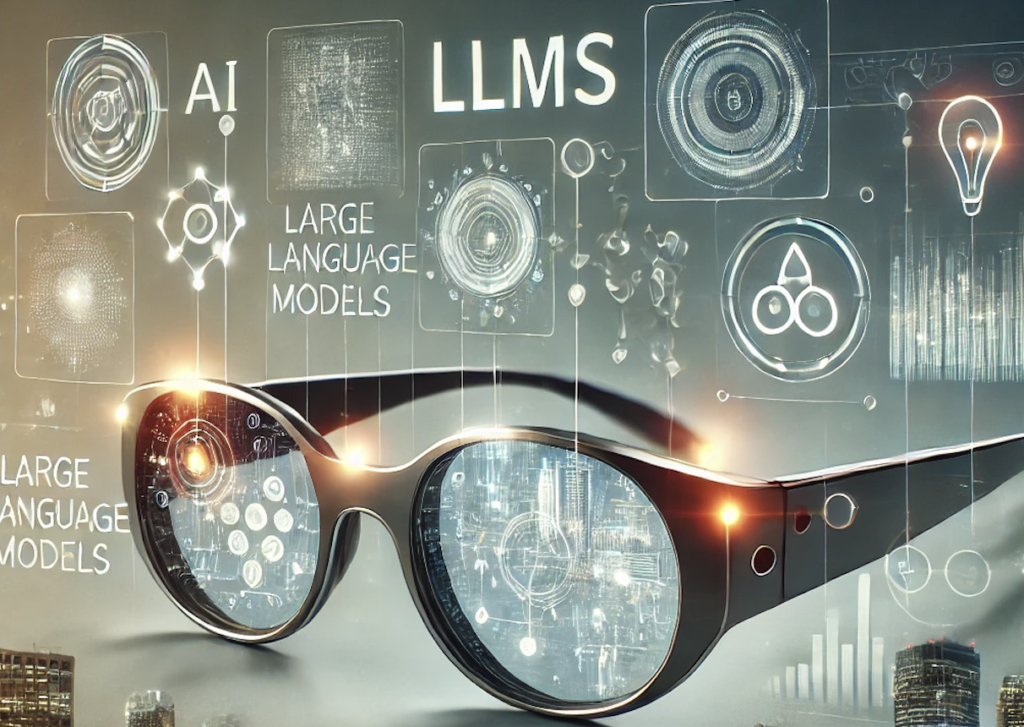Here’s Your Personalized Navigation: How LLMs Help the Visually Impaired Navigate the World
- 1.Vision Loss and Dementia: Why Vision Loss Matters More Than You Think
- 2.Here’s Your Personalized Navigation: How LLMs Help the Visually Impaired Navigate the World
- 3.Seeing Beyond: How LLMs and AR Revolutionize Object Recognition and Language Translation for the Visually Impaired
- 4.Breaking Down Barriers: How LLMs Simplify Complex Information for All Users
- 5.LLMs Reach Expert-Level Accuracy: EYE6 Brings AI Vision Support to Life
- 6.Bringing Clarity to Life: The Link Between Vision Loss and Mental Health

AI-generated picture
In recent years, advancements in artificial intelligence (AI) have made significant impacts across industries, particularly in healthcare. Among these advancements, Large Language Models (LLMs) stand out as powerful tools for improving patient interactions and accessibility. A recent study published in Diagnostics evaluated the ability of LLMs to answer complex medical questions regarding Age-Related Macular Degeneration (AMD). The results showed that LLMs could provide high-quality responses, closely reflecting clinical consensus and showing a low likelihood of harm.
Beyond answering medical questions, LLMs have also demonstrated impressive spatial reasoning capabilities, making them ideal for assisting individuals with visual impairments. Studies reveal that models like GPT-4 excel at constructing mental maps of environments, thanks to their ability to navigate grid-like structures and interpret spatial relationships between objects. Additionally, by using algorithms like Scene Graph Generation (SGG), LLMs can analyze a visual scene and describe object placements with high accuracy. Another innovation, the “Visualization of Thought” (VoT) paradigm, enhances LLMs’ spatial reasoning by guiding the model through multi-step navigation and object localization, providing visually impaired users with precise and reliable descriptions of their surroundings.
Does this all sound a bit too complicated and technical? Let’s make them simple!
Imagine you’re in a new city without a map. Now, think of LLMs like a personal tour guide who can not only remember the streets but also describe how they connect. This is similar to how these models navigate grid-like structures: just as you would rely on a guide to mentally map out where the café is relative to the park, LLMs create “mental maps” of environments, helping visually impaired users understand their surroundings by interpreting the spatial relationships between objects.
Additionally, algorithms like Scene Graph Generation (SGG) act like a detective who gathers clues (in this case, visual elements) and then pieces together how everything is related. For example, it can identify that the book is on the table or that the cup is beside the plate. The algorithm understands the scene’s layout, enabling LLMs to describe object placements with impressive accuracy.
Lastly, the “Visualization of Thought” (VoT) paradigm works like a GPS that constantly updates the route as you move through a space. It doesn’t just provide one instruction but guides you step-by-step, adjusting along the way. Similarly, VoT allows LLMs to perform multi-step reasoning, helping them describe changes in the environment as users move around, offering visually impaired individuals clear, reliable descriptions of objects and their locations as they navigate through a room. This way, LLMs act as both a navigator and a visual interpreter.
As technology continues to evolve, we can expect even more innovations that will break down barriers, offering independence and improved quality of life to countless individuals.
Source List
Evaluating Spatial Understanding of Large Language Models
Author(s). (2023). Evaluating spatial understanding of large language models. arXiv. https://arxiv.org/abs/2310.14540
Enhancing the Spatial Awareness Capability of Multi-Modal Large Language Models
Author(s). (2023). Enhancing the spatial awareness capability of multi-modal large language models. arXiv. https://arxiv.org/abs/2310.20357
Visualization-of-Thought Elicits Spatial Reasoning in Large Language Models
Author(s). (2024). Visualization-of-thought elicits spatial reasoning in large language models. arXiv. https://arxiv.org/abs/2404.03622
Learning to Localize Objects Improves Spatial Reasoning in Visual-LLMs
Ranasinghe, K., Shukla, S. N., Poursaeed, O., Ryoo, M. S., & Lin, T.-Y. (2024). Learning to localize objects improves spatial reasoning in visual-LLMs. Papers with Code. https://paperswithcode.com/paper/learning-to-localize-objects-improves-spatial
